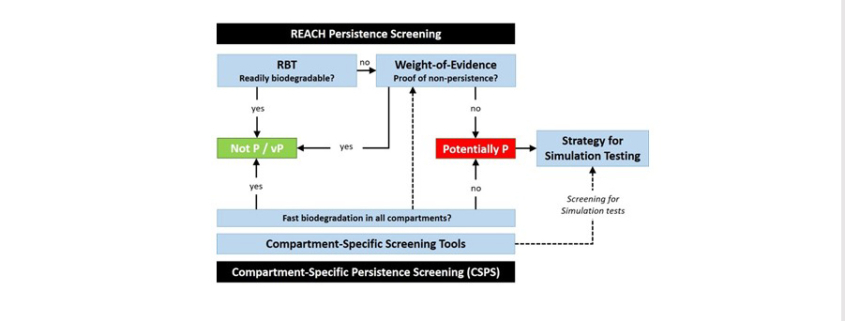New publication: Compartment‐specific screening tools for persistence – potential role and application in the regulatory context
The persistence assessment under REACH relies on compartment‐specific degradation half‐lives derived from laboratory simulation studies with surface water, aquatic sediment or soil. Although these data are given priority, they are not available for most of the compounds. Therefore, according to the integrated assessment and testing strategy for persistence assessment, results from ready biodegradability tests are used within a persistence screening to decide whether a substance is considered as ‘not persistent’ or ‘potentially persistent’. Ready biodegradability is currently only tested in water. For the soil and sediment compartments, approaches for persistence assessment at the screening level are lacking. In previous studies, compartment‐specific screening tools for water‐sediment (water‐sediment screening tool) and soil (soil screening tool) were developed based on the existing OECD test guideline 301C (MITI). The test systems MITI and soil screening tool were used to determine biodegradation data for 15 test compounds.
In the present study, these results are used within the scope of a new alternative persistence screening approach, the compartment‐specific persistence screening. Compared to the persistence screening under REACH, the compartment‐specific persistence screening is a more conservative approach providing additional information particularly for substances that sorb to sediment and soil, and for which the current standard persistence screening might be insufficient. It can be used to identify potentially persistent and non‐persistent compounds in a regulatory context by a comprehensive assessment that includes water, soil and sediment. Experimentally determined half‐lives from the compartment‐specific screening tools can also be used as input for multimedia models for estimating e.g. overall persistence. Thereby, the application of fixed half‐life factors for extrapolation from water to soil and sediment, which is here demonstrated to be inappropriate, can be avoided.
For additional information, see the publication in Integrated Environmental Assessment and Management:
Junker, T., Coors, A., Schüürmann, G. (2019). Compartment‐specific screening tools for persistence – potential role and application in the regulatory context. Integrated Environmental Assessment and Management 15, 470-481.
For further new publications, see ECT’s publication list.

 T. Junker
T. Junker Mark Woodward
Mark Woodward